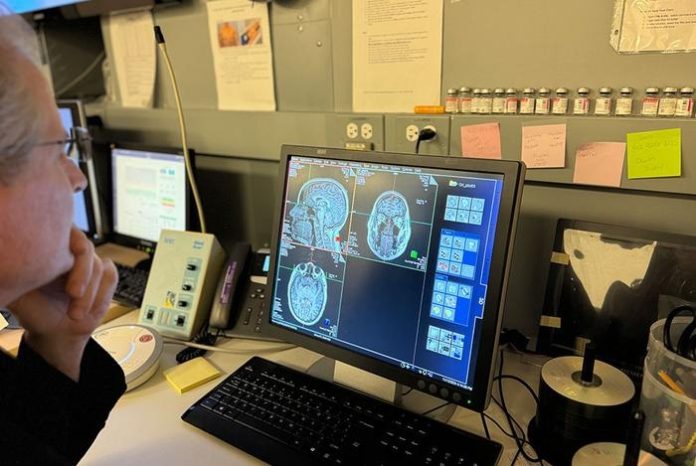
Have you ever left a social event only to find your mind flooded with second-guessing thoughts? “Did I talk too much?”
“Did I offend someone?”
“Were they even enjoying themselves?”
According to a new study from Northwestern Medicine, this overthinking is linked to how different parts of your brain communicate — specifically, a modern “social brain” talking to an ancient “lizard brain.”
Researchers aimed to understand how humans evolved to be so skilled at imagining what others are thinking.
This ability, called social cognition, is essential for building relationships but can also lead to overthinking. The findings could eventually help treat mental health conditions like anxiety and depression.
“We spend a lot of time wondering what others are feeling or thinking,” said Rodrigo Braga, senior author of the study.
“This ability comes from newer parts of the brain that evolved recently in human history. These areas allow us to imagine what’s in someone else’s mind, even though we can’t know for sure.”
The study found that the brain’s advanced social cognitive network, which handles social interactions, is always connected to a much older brain region called the amygdala.
Known as the “lizard brain,” the amygdala helps detect threats and process fear. For example, it triggers your body’s response if you see a snake—your heart races, your body freezes, and you start sweating.
But the amygdala does more than manage fear. “It also influences social behaviors like parenting, navigating social hierarchies, and even aggression,” Braga explained. The study showed that these two brain systems — the ancient amygdala and the modern social cognitive network — are in constant communication, shaping how we process emotions and think about others.
The study used high-resolution brain scans from six participants, collected with functional magnetic resonance imaging (fMRI).
This noninvasive technique tracks brain activity by measuring blood oxygen levels. The detailed scans revealed specific areas of the amygdala, such as the medial nucleus, connected to regions in the social cognitive network.
“This connection helps the social cognitive network process emotionally important content,” said Braga. The findings were replicated multiple times for each participant, confirming their accuracy.
“This level of detail wasn’t possible with older, lower-resolution scans,” said co-author Donnisa Edmonds, a neuroscience Ph.D. candidate. “It allowed us to see parts of the brain network that hadn’t been noticed before.”
The study’s findings could lead to better treatments for anxiety and depression, both of which involve overactive amygdalas. Currently, deep brain stimulation can target the amygdala, but it requires invasive surgery because the amygdala is located deep inside the brain.
With this new research, less-invasive treatments like transcranial magnetic stimulation (TMS) could become an option. TMS uses magnetic fields to stimulate specific brain regions and might target the amygdala indirectly through its connections to areas closer to the skull.
“This could make treatment safer and more accessible,” said Edmonds.
The study, titled The human social cognitive network contains multiple regions within the amygdala, was published in Science Advances. It sheds light on the brain’s complex communication systems and offers hope for new ways to treat mental health challenges tied to overthinking and emotional regulation.
If you care about mental health, please read studies about 6 foods you can eat to improve mental health, and B vitamins could help prevent depression and anxiety.
For more health information, please see recent studies about how dairy foods may influence depression risk, and results showing Omega-3 fats may help reduce depression.
Source: Northwestern University.



